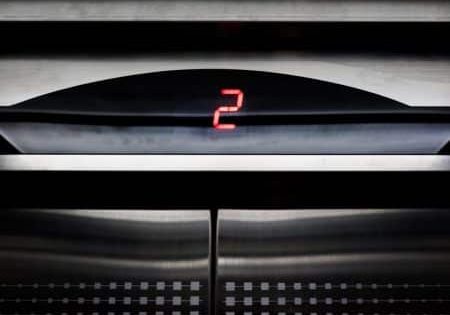Your author discusses frustrations with U.K. regulations.
The decision to scrap the UK Conformity Assessment (UKCA) mark and recognise the European Union (EU) CE mark is welcome, but too long overdue. I dread to think how much time, resources and money have been wasted on this foolishness.
The majority of new lifts and escalators installed in the U.K. originate from within the EU. The majority of lift components are also sourced from the EU. U.K. exports of lift equipment are insignificant in relation to EU and global markets — and that is not to denigrate or undervalue the efforts of several notable and respected U.K. manufacturers (Dewhurst, Atwell, ILE and TVLC spring to mind), but should recognise that we are no longer the manufacturing force that we once were when the Otis Liverpool factory and Express Northampton works were in production. As a net importer of lift equipment, the effect of the UKCA mark, which did not attract equivalence or recognition within the EU or other markets, was to increase prices to U.K. consumers and costs incurred by U.K. contractors, whilst increasing the burden upon exporters who, assuming they market their products in the U.K. and EU, were obliged to operate two product and market compliance systems in order to export to the EU.
As such, the effect of Brexit, of which the UKCA mark was a product, has been equivalent to placing a millstone around the neck of U.K. industry and commerce. The UKCA mark placed an additional and unnecessary burden upon the whole U.K. lift sector and was, in my opinion, an example of an exercise in economic and political futility.
As I write this on the eve of the Augsburg interlift event in Germany, which is the world’s largest lift trade show, attended by worldwide manufacturers and based within the EU, which is the world’s largest commercial market for lift equipment and the U.K.’s closest and largest trading partner, I am led to reflect upon the stupidity of the Brexit debacle.
So, going forward, the U.K. is to retain and comply with EU Standards, presumably aligning its product regulation with that of the EU (as is currently the case), and all of this whilst no longer having a seat at the regulatory or standardisation negotiating tables. Talk about, “Taking back control”!
Having given vent to my frustrations concerning one area of U.K. regulation, I will consider another, which I believe to be in need of structural and regulatory improvement: that of lift and escalator maintenance, which also happens to be the theme of this edition of ELEVATOR WORLD UK.
Under EU law, lift maintenance falls within the Subsidiarity doctrine and has always been a direct responsibility of the individual member states.
Whilst a number of EU member states have quite specific rules and regulations relating to lift maintenance, there is nothing in U.K. legislation which is specific to the sector. The LOLER 1998 Regulation covers lifting operations and aspects of the design of lifting equipment, together with a provision for Thorough Examination, which, by way of the remedy of defects identified, may be considered to relate to maintenance.
Whilst maintenance is the most profitable element of the lift and escalator sector, the relatively low, or almost non-existent barriers to entry make it attractive to start-ups. And, as a respected English Coroner has raised as a matter of concern, “There are no formal requirements for a minimum standard of qualification for people to be lift engineers. In effect, anyone can advertise themselves as a lift engineer/maintenance company.”
This lack of formal qualification of lift engineers and maintenance contractors is, I believe, one of the most pressing challenges facing the U.K. industry. Indeed, it is a continuing source of amazement to me that engineers in the electricity and gas sectors are required to hold and maintain formally regulated certifications, whilst no such requirements apply to engineers in the lift and escalator sector.
Perhaps this goes some way to explaining the wide variation in skill levels within the industry with many evidently excellent engineers and, at the other end of the scale, too many evidently untrained and unsupervised novices.
A similar situation applies to industry firms, some of which are extremely well managed and who develop and support their staff, whilst others are clearly lacking in the necessary basic management and engineering skills and often fall short in terms of ethics and fair dealing.
Whilst regulation often attracts a negative connotation, the reality is that good regulation serves to assist and protect industry, commerce and consumers, as well as to provide structure to industry in terms of formal training and management, which I would suggest are underdeveloped in the U.K. lift and escalator sector. Comparable and associated sectors, including Chartered Institution of Building Services Engineers (CIBSE) in building services, have made significant headway in terms of formalising sector training and qualification structures, such that our sector appears lacking in structure and basic formal organisation. This should be recognised as a challenge and an opportunity to be acted upon.
The maintenance sector is commercially attractive due to its consistent cash flows with many contracts having annual or quarterly advance payment terms. Where a contractor is paid in advance, some of the urgency and drive relating to the completion of the maintenance work is perhaps inevitably blurred.
Whilst there is no common standard for lift and escalator maintenance, I know good maintenance when I see it and can certainly testify as to some of the quite dreadfully neglectful maintenance I too often encounter in my consulting work. Such instances cast a web of distrust and suspicion over the industry, as price competition, often pursued to an extent that the maintenance work cannot be economically performed for the price charged, operates to denigrate the whole of the industry by way of negating the fair price that the good contractors charge.
A further concern of the Coroner was that there is no minimum statutory requirement in relation to what constitutes a lift service. Given that the basic maintenance application for a particular lift or escalator is what it is, there is, in my view, a clear case for a standard in this respect. The level of service, outside of and in addition to the basic level of maintenance, is a matter to be determined by way of price premium negotiated between customer and contractor and/or to be specified by the customer and priced by the contractor. In this sense, I raise no objection to the comprehensive form of contract, which I believe to be an industry staple and one which, when fairly and effectively applied, provides benefit for both customer and contractor.
One may reasonably argue that the higher price premium inherent to the comprehensive form of maintenance presents a greater incentive for an unscrupulous contractor to skimp on the delivery of the maintenance and repair works. Whilst such instances may arise, I see no correlation between the poor standards of maintenance I encounter and the price paid for this. If the maintenance is unsatisfactory, that is what it is, regardless of the price paid. The extent to which the customer is shortchanged just happens to be increased if the premium is higher.
The Coroner was also critical of the regulatory system and, in particular, the lack of any formal escalation process in relation to ensuring the remedy of defects appearing in Reports of Thorough Examination under LOLER 1998, together with a lack of formal enforcement action.
Historically, and when I first started in the industry, reports of Thorough Examination (under s.22 of the Factories Act and/or s.6 of the Offices, Shops and Railway Premises (Hoists and Lifts) Regulations 1968, back then) were taken seriously with contractors striving to ensure that a minimum of defects, if any at all, should appear in a report upon a lift they maintained. Unfortunately, this proactive approach seems to have fallen by the wayside with defects routinely ignored and permitted to persist.
The checks which were once in place, and in my experience common, by Health and Safety Executive (HSE) inspectors in relation to workplaces and by Local Authority Environmental Health Officers (EHOs) in other premises, have declined to an almost non-existent level due to policies of deregulation and associated budgetary constraints and, as such, no longer operate to present the incentives and deterrents they once did.
I believe there is a clear case for revision of the LOLER 1998 Regulation such that the inclusion of a follow-up process to verify the completion of defects should be introduced. Given the widespread use of modern ICT technologies and the fact that inspection firms hold databases or other records of their inspections, there is no reason why such a system of closing-out reports by duty-holders should involve any significant additional cost or management burden.
Whilst revisions to the SAFed LG1 Guidance have, to an extent, addressed some of the concerns raised by the Coroner, I believe a review and revision of the Regulation affecting the sector to be long overdue.
Eur Ing Colin J Craney BA (Hons) BSc (Hons) LLB (Hons) MSc LLM MBA CEng CMgr FCIBSE FCMI FCIArb CMIOSH
Get more of Elevator World. Sign up for our free e-newsletter.







